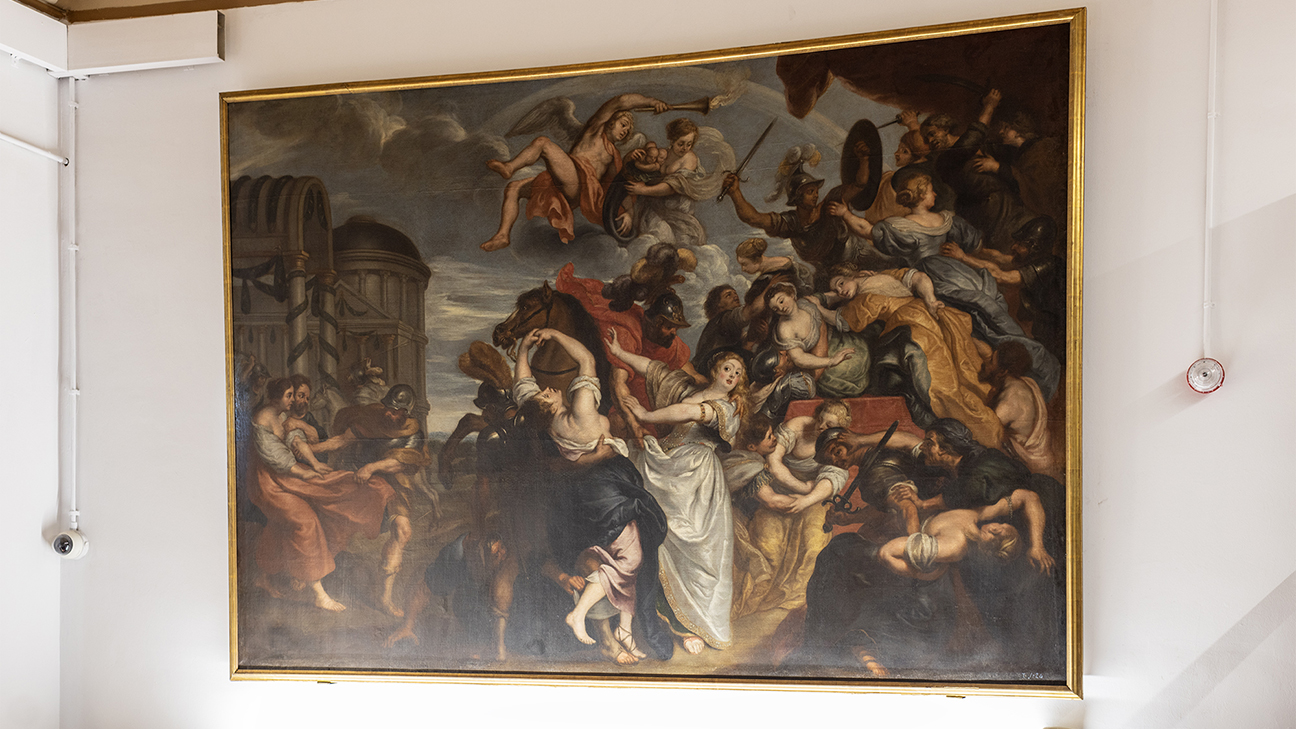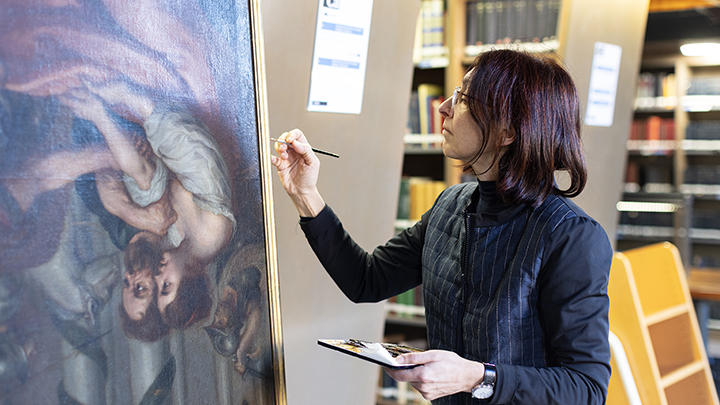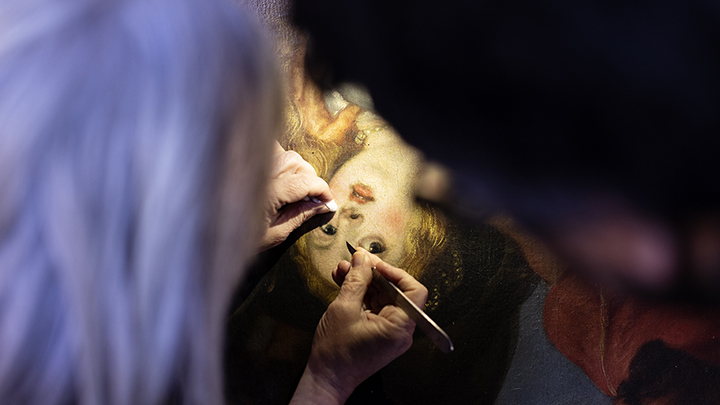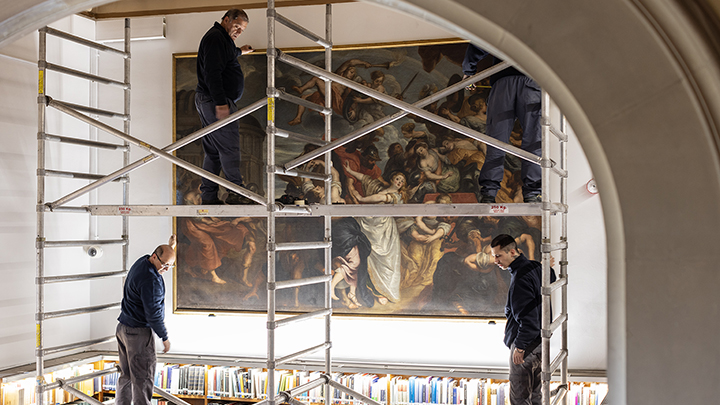Restoration of the painting ‘The Rape of the Sabine Women’, from the Prado Museum collection

News
|
Culture
|
Institutional
(23/01/2024)
On Monday, the painting The Rape of the Sabine Women returned to its original place: the Greek room in the Philology and Communication CRAI Library of the University of Barcelona, in the Historic Building. The 233 x 335 cm oil-on-canvas painting, from the 17th century, from the school of Rubens, belongs to a collection the Prado Museum lent to the UB.

News
|
Culture
|
Institutional
23/01/2024
On Monday, the painting The Rape of the Sabine Women returned to its original place: the Greek room in the Philology and Communication CRAI Library of the University of Barcelona, in the Historic Building. The 233 x 335 cm oil-on-canvas painting, from the 17th century, from the school of Rubens, belongs to a collection the Prado Museum lent to the UB.
Since last December, the painting underwent some conservation work: its surface was cleaned and its support was tightened, and the anchoring system was changed to the one used in the Prado Museum. The performance — similar to the one carried out in 2019 and 2020, in the sala de juntes (boardroom) and the Rector’s Office — was supervised by the restorers Lucía Martínez, from the Prado Museum, and Ana Ordóñez, a regular collaborator of the UB for these tasks.
The Rape of the Sabine Women is a good example of Baroque painting: there is movement, exaggerated gestures and the creation of tumult through the characters. Its Rubensian filiation is undeniable; this may be a copy of a lost original that may have been found in a sumptuous collection.
The subject evokes a primordial mythological episode, extensively treated by several Roman authors. But this painting provides a new perspective. According to Laura Mercader, lecturer of theory and history of art in western modernity at the UB’s Faculty of Geography and History and the Faculty of Fine Arts, and director of the Duoda Women’s Research Centre and the magazine homònima, “the images that represent the rape, not the abduction, of the Sabine women, the legendary episode used by the patriarchal historic narrative as the opening act for the Roman Republic, are, in fact, commemorations of the foundation of the Eurasian patriarchy, based on the war for the ownership of women and territory”. “The Florentine princes and kings of the European monarchies during the 16th and the 17th centuries used them as tools to consolidate their governments’ misogynistic policies”, she says.
The Prado Museum placed this piece at the UB according to the Ministerial order of 10 October 1983. Its provenance must be related to the donation in 1889 by María Dionisia VIves y Zires, Duchess of Pastrana. Prior to that, the art piece had been placed in the Fuensalida de Toledo Palace (1969-1970) and the Sevilla Museum of Fine Arts (1970-1983).
The Historic Building has another painting about this subject, which is also from the Prado Museum collection.
The Rape of the Sabine Women is a good example of Baroque painting: there is movement, exaggerated gestures and the creation of tumult through the characters. Its Rubensian filiation is undeniable; this may be a copy of a lost original that may have been found in a sumptuous collection.
The subject evokes a primordial mythological episode, extensively treated by several Roman authors. But this painting provides a new perspective. According to Laura Mercader, lecturer of theory and history of art in western modernity at the UB’s Faculty of Geography and History and the Faculty of Fine Arts, and director of the Duoda Women’s Research Centre and the magazine homònima, “the images that represent the rape, not the abduction, of the Sabine women, the legendary episode used by the patriarchal historic narrative as the opening act for the Roman Republic, are, in fact, commemorations of the foundation of the Eurasian patriarchy, based on the war for the ownership of women and territory”. “The Florentine princes and kings of the European monarchies during the 16th and the 17th centuries used them as tools to consolidate their governments’ misogynistic policies”, she says.
The Prado Museum placed this piece at the UB according to the Ministerial order of 10 October 1983. Its provenance must be related to the donation in 1889 by María Dionisia VIves y Zires, Duchess of Pastrana. Prior to that, the art piece had been placed in the Fuensalida de Toledo Palace (1969-1970) and the Sevilla Museum of Fine Arts (1970-1983).
The Historic Building has another painting about this subject, which is also from the Prado Museum collection.
Multimedia gallery




